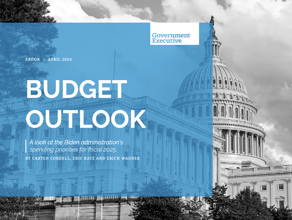Report calls for targeted succession planning
Succession planning is the most useful tool the federal government can use to combat its impending human capital drain, according to a new report from the PricewaterhouseCoopers Endowment for the Business of Government. In January, the General Accounting Office designated "strategic human capital management" as a high-risk area on its biennial list of problems facing government agencies. GAO estimates that about 15 percent of the federal workforce will retire in the next five years. If a large chunk of the federal workforce does retire, the federal government will be hard-pressed to meet its missions, Ray Blunt, leadership coach for the Council for Excellence in Government wrote in his report, "Organizations Growing Leaders: Best Practices and Principles in the Public Service." "The neglect of the people side of government has a long genesis, and the culture changes that are needed to resolve this crisis will not yield to short-term commitments," Blunt wrote. Agencies need to put succession plans in place and begin grooming managers, rather than continuing the current trend of promoting managers without providing any management training or selecting managers based on technical skills rather than management skills, Blunt wrote. A handful of federal agencies have successfully launched succession programs because they made it a priority and treated the issue with a sense of urgency, he said. For example, the Pension Benefit Guaranty Corporation's 1999 strategic plan included a goal to improve internal management by launching a succession management plan. The Coast Guard has created a leadership development center and made the issue a strategic priority and budget item. And the Veterans Benefits Administration has created an office to oversee employee development and training and has made leadership development one of its 10 core values. Blunt recommended that agencies seeking to develop future leaders choose challenging and personalized development strategies, rather than just emulating other agencies. But allowing future leaders to interact with current leaders and using the leadership qualifications for the Senior Executive Service as a template for developing leaders are two important strategies that any agency can use, he said. Blunt also called for leadership from the top. The President's Management Council should require the members of the SES to take responsibility for growing and nurturing leaders in their organizations, and the Office of Personnel Management should recruit retired senior executives to serve as coaches, teachers and mentors to federal employees, he said. "It takes committed organizations to grow leaders and to respond to one of the most critical crises in government," Blunt wrote. "And it takes leaders within those organizations and at the most senior levels in government to lead the effort."
NEXT STORY: Pentagon to open new transit center



